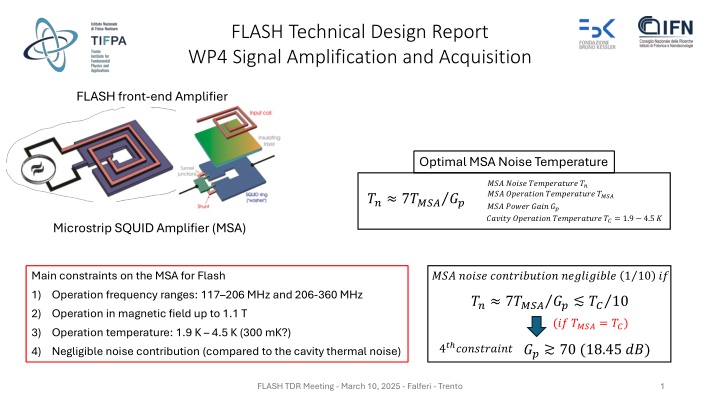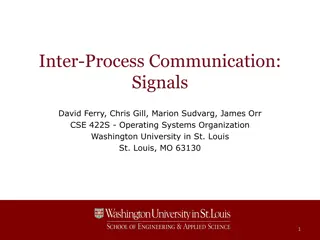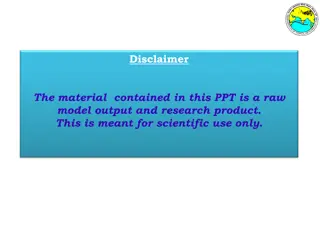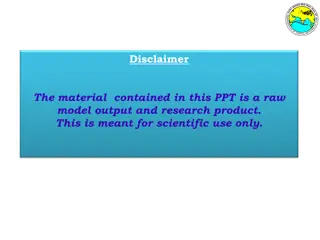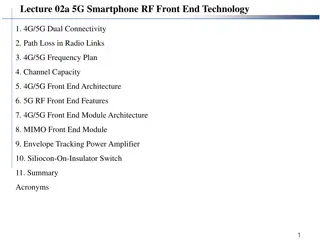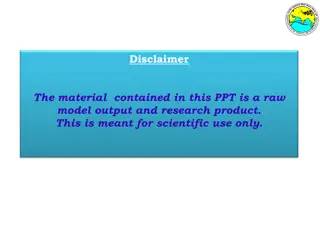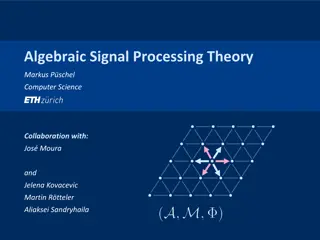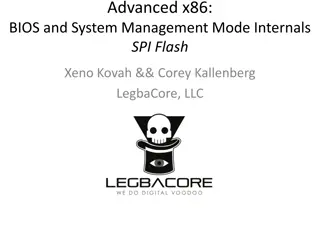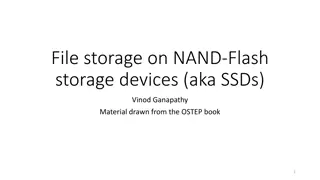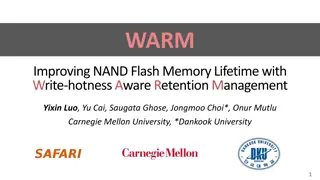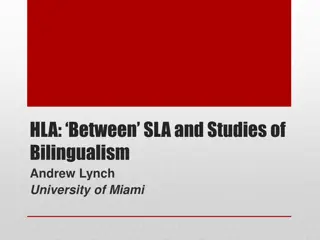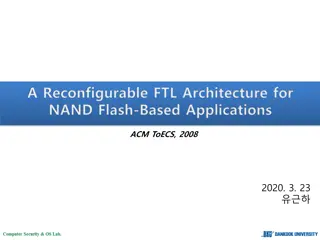Optimal Signal Amplification and Acquisition Design for FLASH Front-End Amplifier
This technical design report discusses the requirements and constraints for the optimal noise temperature in the Microstrip SQUID Amplifier (MSA) used in the signal amplification and acquisition system for FLASH. It outlines the operation frequency ranges, magnetic field operation limits, and operating temperatures for the MSA. The report details the tasks involved in configuring MSA systems, measuring gain, bandwidth, noise levels, and stability while addressing magnetic shielding, multiplexing, and data acquisition challenges. Various testing and acquisition plans for MSA systems are highlighted, emphasizing the need for precise configurations and comprehensive testing under specific environmental conditions.
Download Presentation

Please find below an Image/Link to download the presentation.
The content on the website is provided AS IS for your information and personal use only. It may not be sold, licensed, or shared on other websites without obtaining consent from the author.If you encounter any issues during the download, it is possible that the publisher has removed the file from their server.
You are allowed to download the files provided on this website for personal or commercial use, subject to the condition that they are used lawfully. All files are the property of their respective owners.
The content on the website is provided AS IS for your information and personal use only. It may not be sold, licensed, or shared on other websites without obtaining consent from the author.
E N D
Presentation Transcript
FLASH Technical Design Report WP4 Signal Amplification and Acquisition FLASH front-end Amplifier Optimal MSA Noise Temperature ??? ????? ??????????? ?? ??? ????????? ??????????? ???? ??? ????? ???? ?? ?????? ????????? ??????????? ??= 1.9 4.5 ? ?? 7?????? Microstrip SQUID Amplifier (MSA) Main constraints on the MSA for Flash 1) Operation frequency ranges: 117 206 MHz and 206-360 MHz 2) Operation in magnetic field up to 1.1 T 3) Operation temperature: 1.9 K 4.5 K (300 mK?) 4) Negligible noise contribution (compared to the cavity thermal noise) ??? ????? ???????????? ?????????? 1 10 ?? ?? 7?????? ?? 10 (?? ????= ??) 4? ?????????? ?? 70 (18.45 ??) FLASH TDR Meeting - March 10, 2025 - Falferi - Trento 1
WP4 Signal Amplification and Acquisition Participants: TIFPA/Trento, Pisa, Camerino, LNF, Bonn/Mainz Coordinators: Paolo Falferi (MSA) (TIFPA/Trento), Gianluca Lamanna (Amplification/DAQ) (Pisa) WP Objectives (from the CDR): - Acquisition of some complete commercial MSA amplification systems, characterize them in terms of gain, bandwidth and noise down to temperatures of the order of 300 mK and then operate them in conditions similar to those in Flash as far as concerns operating temperature, ambient magnetic field and resonating input load. - Digitization and acquisition of the signal, and the definition of the calibration procedure. FLASH TDR Meeting - March 10, 2025 - Falferi - Trento 2
Tasks of WP4 Signal Amplification and Acquisition Task 4.1: MSA configurations + gain, bandwidth, noise vs T measurements Task 4.2: Stability (resonant input load Task 4.3: Postamplifier (cryogenic) Task 4.4: Magnetic shielding WP2 Mechanical design and cryogenics Task 4.5: Multiplexing (simultaneous measurement of multiple cavity modes) Task 4.6: Replacement of the MSA WP2 Mechanical design and cryogenics Task 4.7: Secondary amplification and down conversion chain Task 4.8: Digitization and data acquisition Task 4.9: Full test of amplification chain with a Bulk Acoustic Resonator (BAW) WP3 RF Cavity) FLASH TDR Meeting - March 10, 2025 - Falferi - Trento 3
WP4 Tasks Update Task 4.1: MSA configurations Task 4.1: MSA configurations Decided acquisition of 5 MSA Systems from ezSQUID (TIFPA order request ok) (MSA system = MSA + Nb shield + cryogenic semiconductor postamplifier + room-temperature bias box) (Each team should acquire the right cryogenic cables (SMA conn.) for their cryostat) 1 MSA system (center frequency 150 MHz, bandwidth at least 100 MHz), usable down to T= 20mK. TRENTO (bandwidth, gain, noise tests at least down to 300 mK) 1 varactor-tunable MSA system with operation frequency range from 100 MHz to 200 MHz. TRENTO (test of the tuning of the operation frequency at 4.2K in liquid helium) 1 MSA system (center frequency 150 MHz, bandwidth at least 100 MHz) CAMERINO (magnetic shield for test up to 1.1T ) 1 MSA system (center frequency 150 MHz, bandwidth at least 100 MHz) PISA (simultaneous measurement of multiple cavity modes) 1 MSA system (center frequency 250 MHz, bandwidth at least 100 MHz) . PISA (simultaneous measurement of multiple cavity modes) FLASH TDR Meeting - March 10, 2025 - Falferi - Trento 4
WP4 Tasks Update Task 4.3: Task 4.3: Postamplifier Postamplifier The cryogenic semiconductor postamplifier is provided by ezSQUID OK OK Task 4.4: Task 4.4: Magnetic Magnetic shielding Comsol simulations of the passive shielding (easiest), ferromagnetic/superconducting hybrid to know the operation magnetic field of the MSA (and postamp and circulators...) shielding WP2 Mechanical design and cryogenics Task 4.5: Multiplexing Task 4.5: Multiplexing Simultaneous measurement of multiple cavity modes Claudio Puglia Task 4.6: Replacement of the MSA Task 4.6: Replacement of the MSA Considering the possibility of a separate cryostat for the MSA design and cryogenics to evaluate the feasibility of cryogenics WP2 Mechanical FLASH TDR Meeting - March 10, 2025 - Falferi - Trento 5
END FLASH TDR Meeting - March 10, 2025 - Falferi - Trento 6
